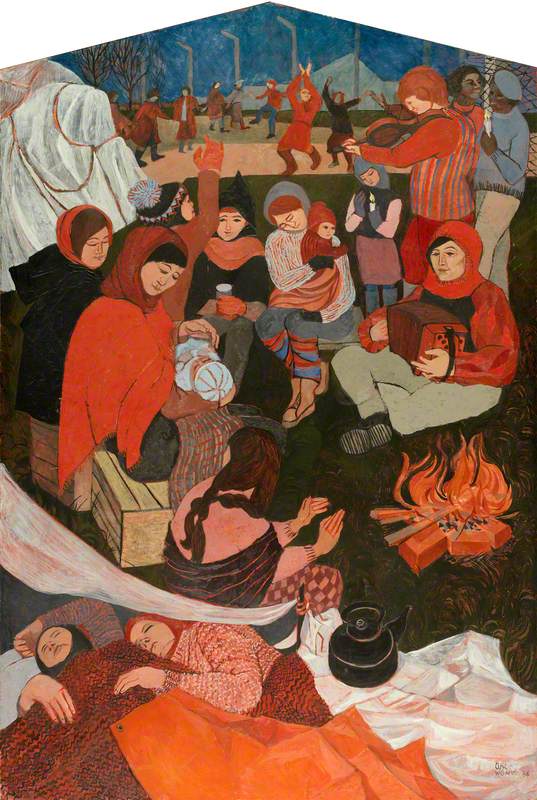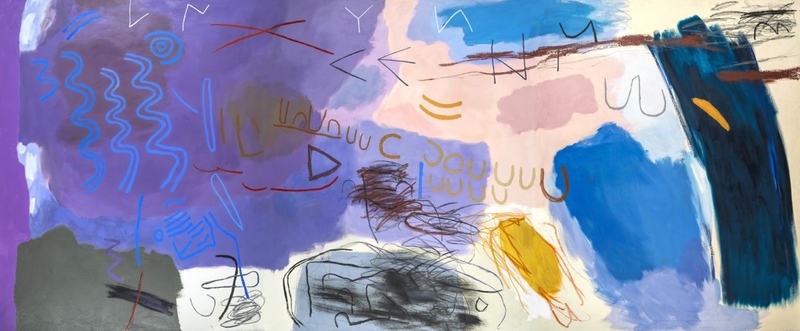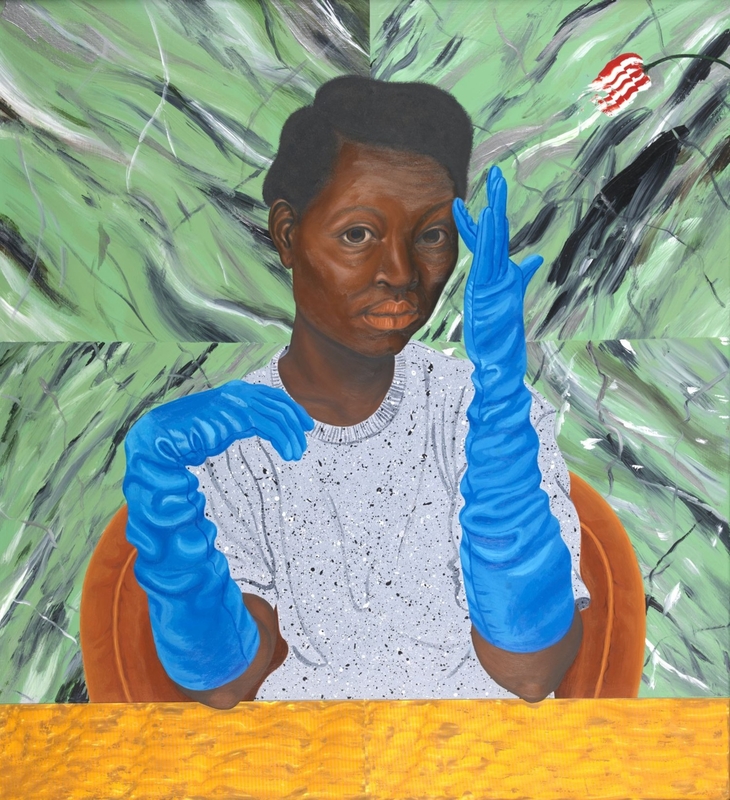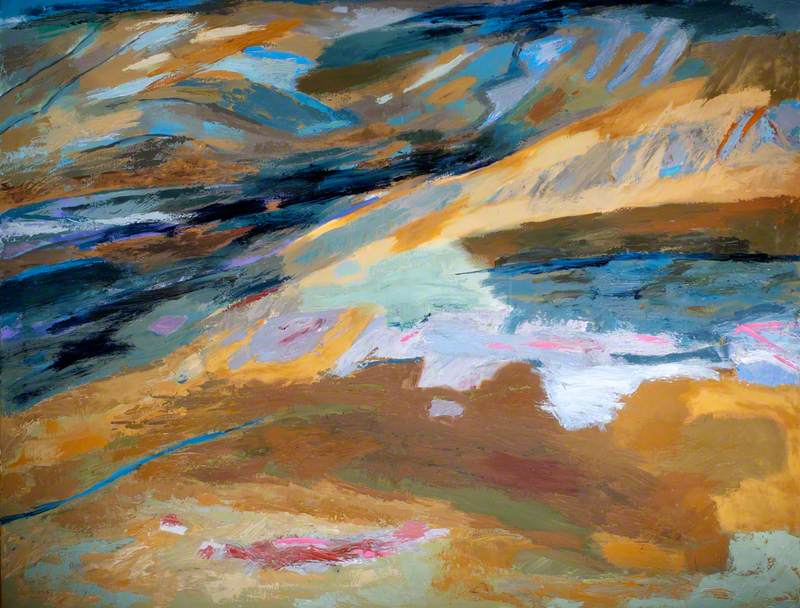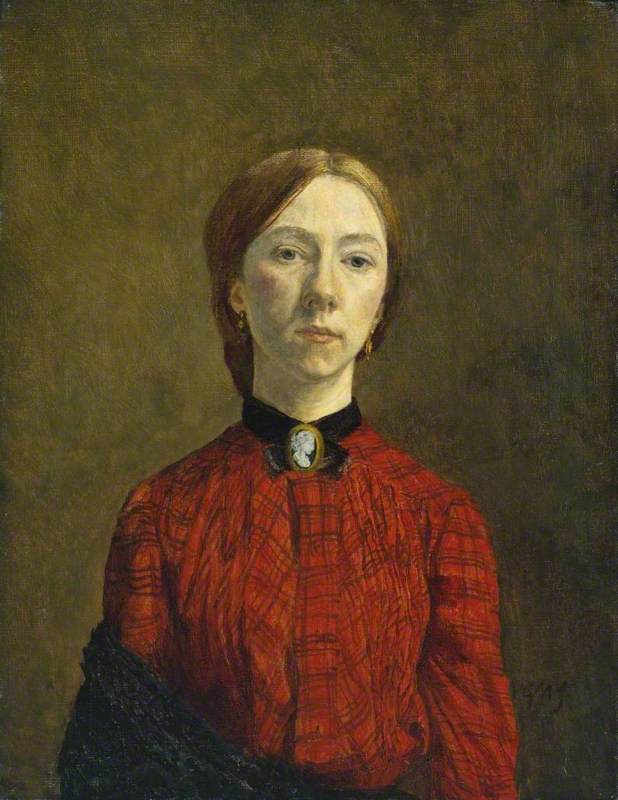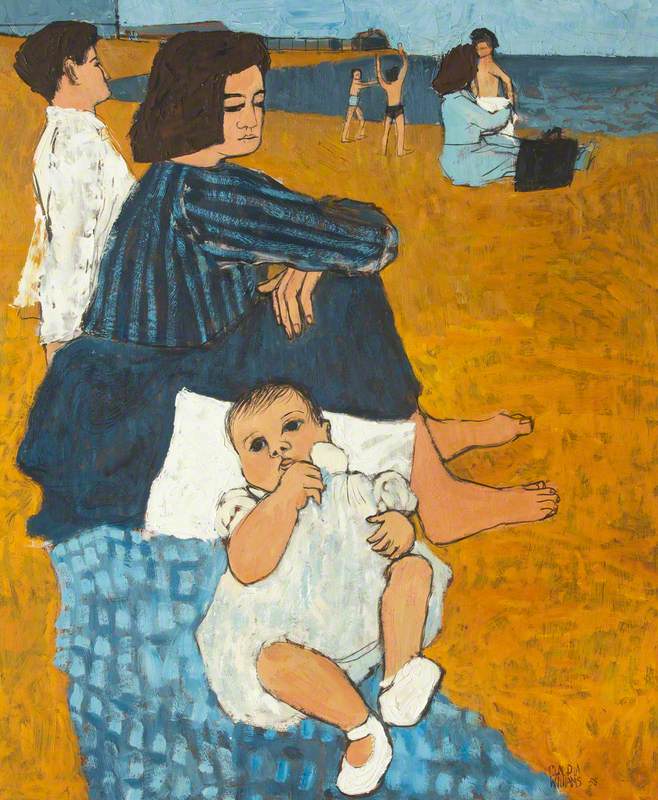The Library was granted a Royal Charter in 1907 with a clear mandate to develop a hybrid collection with artworks as part of an overall strategy to preserve a large range of material. The paintings collection is focused around Welsh subject matter, Welsh portraits and Welsh artists. From the start the emphasis was to create a collection of works which represented very specifically the place of Wales and the Welsh nation within history and the world.
Art Unlocked is an online talk series by Art UK in collaboration with Bloomberg Philanthropies. This Curation is based on a talk by Morfudd Bevan, Art Curator at the National Library of Wales, on 30th March 2022. You can find a recording at: https://youtu.be/8MSL6WncjoU
-
Vase of Flowers 1910s
John was known for her emotive portraits and interior studies full of introspection and intensity. The artist trained at the Slade School of Art and then at James Mc Neill Whistler’s School of Painting, Académie Carmen in Paris. Whistler once stated to her brother, the artist Augustus John: ‘It’s tone that matters, your sister has a fine sense of tone’. This work dating from the 1910s shows the artist moving away from painting in layered glazes to the mosaic like brush strokes of her later works, and would’ve been painted whilst the artist was living in Meudon, Paris. The work was donated to the National Library of Wales by CASW, the Contemporary Art Society of Wales in 1957.
Gwen John (1876–1939)
Oil on board
H 40 x W 32 cm
Llyfrgell Genedlaethol Cymru / The National Library of Wales
-
Bendith y Tonnau 1973
Howard-Jones trained at the Slade School of Art in 1920 where she was named by her tutor as the best colourist the Slade had ever produced. She was known for her impressionistic and neo-romantic styled works of Morlaes and Skomer Island on the Pembrokeshire Coast. For nine summers between 1949 and 1958 she was one of the resident caretakers of Skomer Island, where she created botanical and ornithological drawings. The acclaimed artist and poet David Jones wrote of the artist: ‘…this artist’s milieu is the most westward extremity of Wales, the sea-girdled land of the severn cantrevs of Pwyll Pendeig Dyfed. Or more precisely still, the morlan of those magical cantrefi, where lithosphere and watersphere and atmosphere merge.
Ray Howard-Jones (1903–1996)
Gouache
H 29 x W 43.5 cm
Llyfrgell Genedlaethol Cymru / The National Library of Wales
-
Greenham, Peace Vigil 1984
This large monumental oil on board work depicts a group of women protestors, including mothers and children, gathered around a fire at night during the Greenham protests in 1984. The protests were a demonstration against the deployment of nuclear cruise missiles at the RAF Greenham Common airbase in Newbury, Berkshire in the 1980’s. The vigil was begun by a small group of Welsh female activists in 1981, who marched 120 miles from Cardiff to Greenham. The protest lasted 3 years and the artist took part in the peace movement on several occasions. The pentagonal form reminds one of gable altarpieces echoing religious paintings from the European tradition, and also references Williams’ strong Catholic faith.
Claudia Williams (b.1933)
Oil on board
H 182.5 x W 121.5 cm
Llyfrgell Genedlaethol Cymru / The National Library of Wales
-
Bryn Celli Ddu 2005/2006
Born in Ceredigion and having trained at Cardiff College of Art in the 1950s, Lloyd Jones creates vibrant, abstract, dynamic and expressionistic Welsh landscapes, and is heavily influenced in her works by the cultural and geographic history of Wales. The artist stated: ‘The subject of my work is the natural world and my own identity, clouds, shadows, rocky strata, field patterns and wildernesses’. This large triptych oil work ‘Bryn Celli Ddu’, was kindly gifted to the National Library of Wales by the artist. The work is based on the carved linear designs of the Ogham Alphabet, created by the Celtic Britons on the prehistoric stones in the burial chamber ‘Bryn Celli Ddu’ on Anglesey, north Wales, showing the roots of the Welsh language.
Mary Lloyd Jones (b.1934)
Oil on canvas
H 152.4 x W 365.8 cm
Llyfrgell Genedlaethol Cymru / The National Library of Wales
-
Blue Gloves, Orange Chair (Menig Glas, Cadair Oren) 2016
In 2021 Seren Morgan Jones was named by ARTUK as one of its top 10 artists to follow. The artist creates dynamic works portraying powerful Welsh females in a mixture of a traditional and contemporary style, inspired by such artists as John Singer Sergeant, Caravaggio, Gustave Klimt and Velasquez. The women are always in control in the artists’ works - with eyes looking out directly at the spectator and turning the ‘male gaze’ on its head. Influenced by classical portraiture, of women portrayed as passive and objects to be admired - the artist felt that there was a void which needed to be filled when it came to portraying Welsh women in a contemporary manner. This was the first work by the artist which we added to our collections in 2018.
Seren Morgan Jones (b.1985)
Mixed media on canvas
H 56 x W 51 cm
Llyfrgell Genedlaethol Cymru / The National Library of Wales


